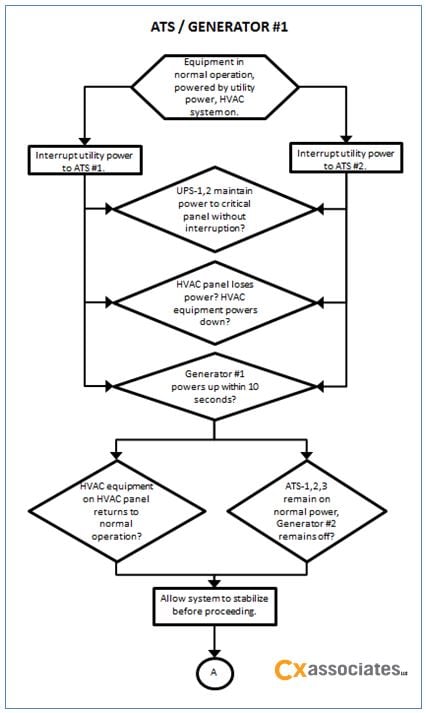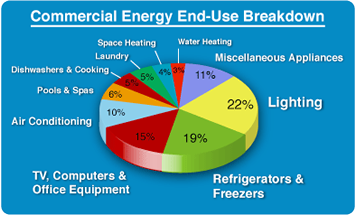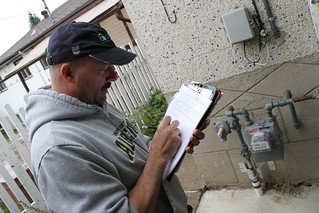In a previous blog post, Jennifer Chiodo discussed why energy benchmarking is beneficial for everyone, whether it’s for a residential building or a commercial building. Benchmarking allows you as the building owner to not only understand how your building is doing from an energy standpoint over time, but it also compares the building to other similar buildings in its class. Using the Energy Star Portfolio Manager online benchmarking tool, you can monitor a building’s energy usage over time by setting goals and comparing the overall energy use intensity to a baseline year.
Katie Mason
Recent posts by Katie Mason
3 min read
Energy Benchmarking for a Healthcare Network
By Katie Mason on Jan 21, 2015 5:00:00 AM
Topics: Standards and Metrics Building Performance & Technology Healthcare
3 min read
Testing an Emergency Power System for a Data Center
By Katie Mason on Dec 3, 2014 5:00:00 AM
For a recent commissioning project, part of our scope of work was to test an emergency power system for a data center. Because this data center was a very important part of the client company’s work, the system and all components needed to work as intended by the design, and it was crucial that it be tested with all aspects involved before the data center was utilized. This was to ensure there would be no loss of power to the data center servers if any issues were identified. In order to properly test this mission critical system, we not only needed to understand how each component worked, but we also needed to put together full testing documents that included the relationship between all of the components. To make the entire process more fluent, we suggested a coordinated effort for creating documents and testing the system.
Topics: Building Performance & Technology
3 min read
Performing a Water Consumption Analysis (Part 2)
By Katie Mason on Oct 15, 2014 6:00:00 AM
In a previous blog post, I discussed our process for constructing a scope of work to perform a campus water consumption analysis. At the time, we knew a minimal amount about the existing metering system. A site visit was conducted to allow us to put our eyes on each meter listed for the campus. After this was completed, we were able to provide helpful information to our client regarding the current water consumption and metering system as well as next steps for reducing their consumption using a greater level of water use monitoring.
Topics: Standards and Metrics Building Performance & Technology
3 min read
Carbon Monoxide and Parking Garage Ventilation Systems
By Katie Mason on Aug 27, 2014 6:00:00 AM
When it comes to enjoying the many positive features of an enclosed parking garage, most users will not think about the type of ventilation system in place. But an enclosed parking garage poses an issue with carbon monoxide (CO), a very harmful toxic gas that is created when “fuels burn incompletely – most vehicles have an internal combustion engine where this occurs”[1]. Known as a “silent killer,” CO has no odor or color, but can very quickly poison a person before they even sense anything is wrong. Because of this risk, it’s especially important to make sure there is a proper ventilation system in any enclosed area where there is a potential for formation of CO. In this blog post, I will discuss the pros and cons of two current system designs that are typically used. When an engineer designs a ventilation system for an enclosed garage, they carefully calculate how much CFM is required based on square footage and quantity of operating vehicles. Depending on climate and location, the applicable standard/code for ventilation must be carefully followed to ensure the minimum requirements are met.
Topics: Energy Efficiency Building Performance & Technology
3 min read
Planning for an ASHRAE Level 2 Energy Audit
By Katie Mason on Jul 16, 2014 6:00:00 AM
In a recent blog post, “The Benefits of an ASHRAE Level 1 Energy Audit,” I discussed the process of performing an ASHRAE Level 1 energy audit, which is the first step in the LEED accreditation process for Existing Buildings (LEED EB). The Level 1 report is used to determine whether there is enough energy saving opportunities to proceed with LEED EB accreditation. In order to receive an energy credit in the official LEED EB application, however, an ASHRAE Level 2 energy audit is required. The Level 2 audit uses energy surveying and an engineering analysis to provide an even more detailed breakdown of how a building is performing; going deeper into the analysis of the Level 1 measures and identifying additional measures to improve the efficiency and functionality of the building. The Level 2 report details the opportunities to such a degree that actual decisions on implementation can be made and the LEED EB credit can be realized.
Topics: Green Building Energy Efficiency
2 min read
Performing a Water Consumption Analysis – Scope of Work Determination (Part 1)
By Katie Mason on May 21, 2014 6:00:00 AM
We were recently approached by a client inquiring about whether we were able to perform a water consumption analysis for their large campus. The client is looking for ways to reduce the campus’ water consumption. This type of work varies for different buildings depending on how the water is used. With this in mind, we needed to construct a unique scope of work in order to develop a plan that could be implemented and be successful.
Topics: Sustainability Building Performance & Technology
3 min read
Benchmarking Your Building With Wegowise
By Katie Mason on Apr 23, 2014 6:00:00 AM
In a previous blog post, I discussed the features of the new Energy Star Portfolio Manager, a free online tool for benchmarking your building’s energy usage. Recently a client introduced me to another online benchmarking tool called Wegowise. This client has been successfully using Wegowise for their multi-family buildings. They started using it before multi-family was included in Portfolio Manager, and continue to use it because they like the easy to use interface, the automated features and how their building’s energy usage is displayed in a simple way that is easy to understand/analyze.
Topics: Standards and Metrics Building Performance & Technology
5 min read
The Benefits of an ASHRAE Level 1 Energy Audit
By Katie Mason on Mar 12, 2014 6:00:00 AM
Although I have commissioned a number of LEED New Construction projects, I have recently become involved in the LEED accreditation process for Existing Buildings (LEED EB). As part of the energy prerequisite, one requirement is to conduct an Energy Audit that is equivalent to ASHRAE Level 1 Energy Audit. This is the first of three levels of audits that ASHRAE has designed and more and more existing buildings are turning to this process to define energy savings opportunities within their buildings. Whether you are striving for LEED EB energy credit, or are focused on improving the longevity and operation of your building, a Level 1 Audit is a good place to define the roadmap to realizing these goals.
Topics: Building Cx & Design Review Energy Efficiency
3 min read
A Paperless Commissioning Process – Is it Effective?
By Katie Mason on Jan 29, 2014 5:00:00 AM
Here at Cx Associates, we are actively searching for ways to use less paper in our commissioning process and around the office. When it is feasible, I try to complete any and all reading, researching, or note taking directly on my computer. My pursuit of going paperless is never entirely successful, but utilizing a tablet in the field has been helpful. Rather than print out drawings, specifications and other project documents, I generally download everything to one of the office iPads prior to my visit. If you haven’t already, check out my colleague Ben Fowler’s blog posts about popular apps we use on a regular basis. There are specific apps designed for reading and marking up PDF documents, as well as many others that can make a paperless approach more appealing.
Topics: Building Cx & Design Review Building Performance & Technology
3 min read
LEED Version 4 and Its Effects on Commissioning Credits
By Katie Mason on Dec 25, 2013 5:00:00 AM
At the USGBC Greenbuild Conference held in November of this year, the new LEED Version 4 was officially launched. This updated version has evolved due to a more market-driven green building market. The requirements for a LEED certified green building are more economically feasible and becoming the new standard for construction. In order to continue to drive the market towards greener construction, LEED Version 4 has made some significant changes, including more requirements (pre-requisites) and additional credits. A big portion of this change is focused on the energy performance of the building, which affects our commissioning process.










